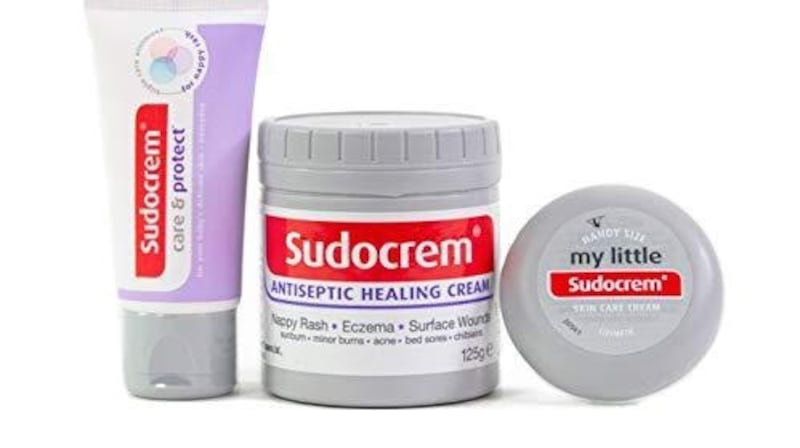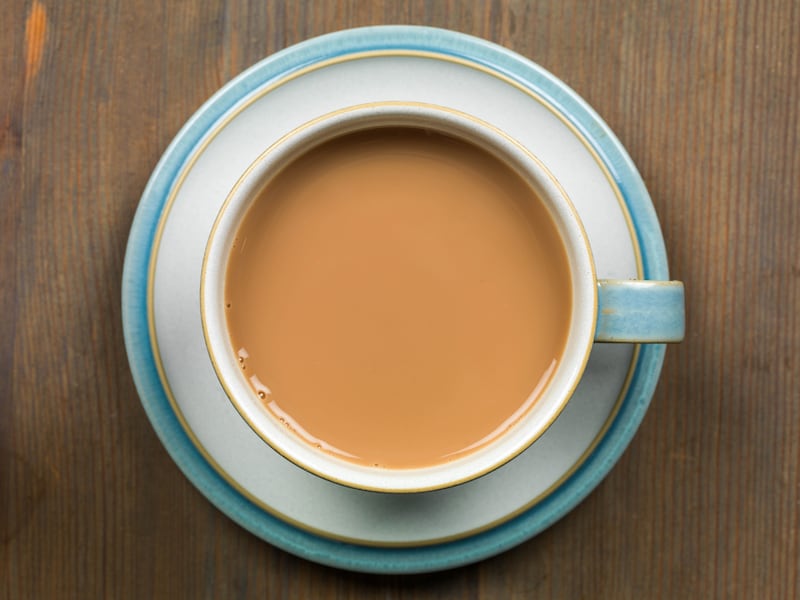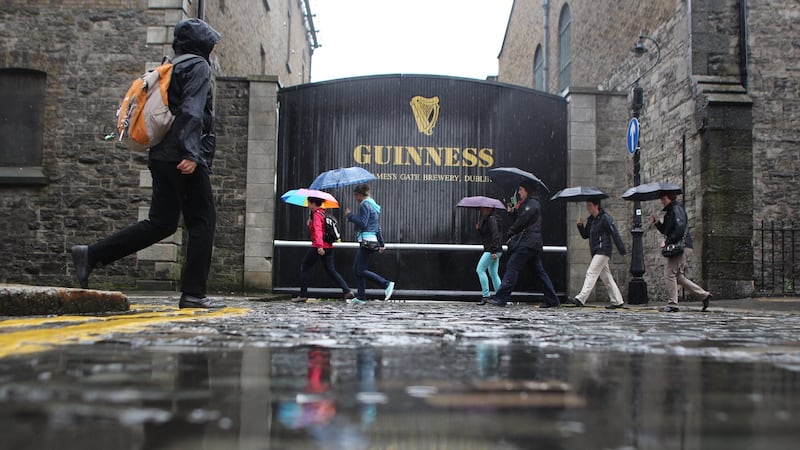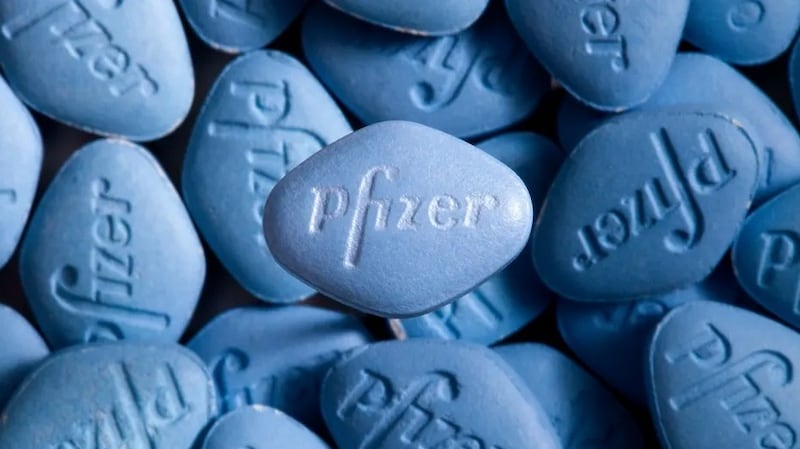Earlier this month, more than 100 people working in the Sudocrem factory in Dublin were told their jobs were going east to Bulgaria. As grim as the news was for the people involved and their families, the story also had wider implications.
Sudocrem is more than just a cream that people dollop onto themselves when they're feeling rashy and it is one of only a handful of home-grown brands which people here have held close their hearts – and other parts of their bodies – for close to a century. It is a brand we have pride in, something that was made clear by the delighted response to the recent Madonna picture which featured a tub of the Irish elixir in the background.
The Sudocrem story is a thing of legend. It was born at a time when pharmacists were as much inventors as they were retailers and dispensers of medicines. One such medical inventor was Thomas Smith, a pharmacist with a shop on the Cabra Road. He concocted a cream to treat nappy rash, eczema, pressure sores and all manner of other minor skin lesions.

Displaying a distinct lack of imagination he called it Smith’s Cream. On reflection he renamed it Soothing Cream. Dubliners struggled to pronounce the “th” and took to calling it Sudocrem instead. The name stuck.
In the 1970s Smith’s Sudocrem was launched in the UK and quickly became the market leader for treating nappy rash there as it was here. It is now available in more than 40 countries and close to 35 million pots are sold every year. The company was sold to Teva Pharmaceutical in 2016. While it has other operations in Ireland it has little or no loyalty to the country which is no doubt behind its decision to uproot Sudocrem from its home.
By coincidence, another beloved Irish brand, one still based in Cabra, as it happens also changed hands this month. You might think Batchelors Beans is as Irish as Peig Sayers, draped in a tri-colour dancing the walls of Limerick while waving a hurl in the air. But it too is set to fall into foreign hands. Last week a Boston-based company called Bain Capital – set up by Mitt Romney in case you are interested – beat other private equity bidders to acquire Valeo Foods from CapVest in a deal worth more than €1.7 billion.
Valeo was created in 2010 by Cavan financier Séamus Fitzpatrick’s London-based investment company, CapVest Partners. While it was first set up as a means to acquire two separate Irish businesses, Batchelors and Origin Foods, it has expanded dramatically over the last decade and is now a global enterprise with multiple brands and lines. It also owns Kettle Crisps, Odlums, Kelkin and Fox’s Glacier Mints.
Sudocrem and Batchelors are not the only Irish brands to spread their wings and leave the island or at least have themselves taken over by giant multinationals and many of our most beloved products have lost either all of – or most of – their connections with the auld sod. Here are just some of them.
Jacob’s Biscuits
When it comes to old school biscuity treats you can’t really top Kimberley, Mikado, Coconut Cream. Oh and we can’t forget Marietta and Fig Rolls either. Sadly Jacobs, which had a history of baking in Ireland which stretched by to the middle of the 19th century, haven’t been making biscuits in Ireland quite some time.
Jacobs was set up in Waterford in 1851 by two Quaker brothers, William and Robert Jacob. They moved their biscuit enterprise to Dublin’s Bishop Street – to a site which would one day be occupied by rebels in the Easter Rising. Jacobs merged with Boland’s – another biscuit site occupied by rebels in the 1916 Rising – in the 1970s and the pair became Irish Biscuits.
The entire operation shifted to a factory in Tallaght. In the 1990s the company was taken over by French company Danone, and subsequently the Irish link was re-established when Valeo Foods (of Batchelors fame) entered the frame. The biscuit production line in Tallaght fell silent more than a decade ago and now our biscuits are made overseas. With the arrival of the Boston bankers into the picture, the link between Jacobs and Ireland is likely to grow still more tenuous. And if all the ownership changes weren’t confusing enough, we still have no idea how they got the figs into the fig rolls.
Avoca
You probably won’t be overly surprised to learn this shop full of lovely things was born in Avoca, Co Wicklow. It may just be the oldest shop in Ireland and certainly has the oldest working woollen mill in Ireland, dating all the way back to 1723. For two centuries the folk at Avoca weaved away. But then it was taken on by three Wynne sisters in the 1920s. The Wynnes had a certain flair and started making waistcoats for King George VI and baby blankets for the British royals, including Queen Elizabeth II. The royal connection did them no harm with well-heeled folk at home and abroad but such patronage wasn’t really enough to keep the show on the road.

In the 1970s, Avoca fell on hard times. It faced closure until it was bought by Donald Pratt, a solicitor who had been brought in to handle the sale of the mill. The Pratt family turned the business around in spectacular style and added clothes, jewellery, gifts and food to the fancy knits and rugs and weaves it was already selling. His children sold the business to US catering giant Aramark for something in the region of €64 million in 2015.
Lyon’s Tea
While Lyons Tea is seen by many as the archetypal Irish tea, it was never really Irish at all. The company was actually founded in London by two German-Jewish families – the Solomons and the Glucksteins. In 1895, Joseph Lyons became the chairman and in 1904 packaged tea started selling under his name.
In the first half of the last century the Irish tea market was all over the shop and there were over 50 different tea brands available. Quality differed dramatically depending on where you were and what you bought. What made Lyons stand out was the fact that it was the first tea brand to expand nationwide and the first to introduce greater consistency. Then there was its ubiquitous television advertising – although the notion of minstrels dancing around like pretty racist eejits could scarcely be more unpalatable in the world in which we live now.

Lyons, “the quality tea” grew rapidly throughout the 1960s and it wasn’t until Barry’s broke out of Cork and started growing its market share significantly that it had any real challengers for the title of Ireland’s most beloved tea.
Lyons remains the most popular tea in Ireland although it has all but severed its ties with the country of its birth. First off it the company was bought by Unilever and secondly the tea is processed in a PG Tips factory in the north of England.
Jameson
Jameson may seem as Irish as any Whiskey and it is still distilled here – in Cork as it happens – but the company has not been in Irish hands for a very long time. John Jameson was a Scot who moved to Ireland with his wife who was the daughter of a Scotch maker called Haig, in the18th century. Having been immersed in the world of whiskey through marriage, Jameson turned his hand to whiskey and soon had a healthy enough business distilling on Dublin’s Bow St, at the site where the museum that shares his name still sits.
Fast forward 200 years to the 1960s when three of the most famous Irish alcohol brands – Jameson, Cork Distilleries and John Power came together to form the Irish Distillers Group. Bushmills then joined the boozy party in the early 1970s. It was all hunky dory for a couple of decades until IDG faced a hostile takeover in the 1980s with Grand Metropolitan, Allied-Lyons and Guinness seeking to take control.
The bid failed but Irish Distillers still stopped being as Irish as it was. It was the subject of a less hostile takeover by Pernod Ricard. Then Bushmills was sold to Diageo while Paddy was sold to Sazerac, a company which can to Ireland via Cognac and New Orleans.
Guinness
In 1759, Arthur Guinness signed a 9,000 year lease for a four-acre site that would become the St James’s Gate brewery. He agreed to pay an annual rent of £45. When he started out Arthur Guinness did not make Guinness, or at least he didn’t make the Guinness. He made only ale and he was more than 10 years into his enterprise before he even heard of porter – an English beer invented in London in 1722. In the 1770s he started making it in Dublin and in 1799 he stopped brewing ale altogether.

Fast forward to 1997 when Guinness merged with Grand Metropolitan in a £24 billion deal and became Diageo. What does Diageo mean? It comes from the Latin word for “day” and the Greek word for “world” and was so chosen – the company says – “because every day, around the world, millions of people enjoy the company’s brands”.
Cully & Sully
Certainly up there with the friendliest of Irish soups, this brand was born in 2004 and was the brain child of Cullen Allen (Cully) and Colum O’Sullivan (Sully). While it still comes across as pretty friendly it was bought almost a decade ago by the New York-headquartered organic products group Hain Celestial.
HB Ice Cream
While the old-school treat is still named after the Rathfarnham farm where is was born, it too is owned by Unilever. It closed its Irish manufacturing plant almost 15 years ago and all the ice cream sold under this brand is, in fact, made in England.
Siúcra
How could a company called Siúcra be anything but Irish to its core? Well the company might be a bit Irish but our sugar really isn’t. All the Irish sugar-beet factories are long gone, and Greencore, the company that owns the Siúcra brand, imports its sugar from elsewhere in Europe, frequently Germany, and then repackages it.
Eir
Did you know that “eir” is the Old Norse word for help or mercy? We’ll just leave that Wikipedia-gleaned nugget there for everyone who has ever struggled to get help or mercy from eir. Anyways we digress. You could probably age an Irish person handily enough by asking for the first name they remember this once State-owned company traded under. First it was the P&T and then it was Bord Telecom Éireann, then Telecom Éireann before Eircom and finally Eir. Bits of it have also traded as Eircell and Meteor and more besides. It has changed hands at least 10 times over the last 20 years and is now owned by Xavier Niel and his Paris-based NJJ Telecom Europe investment fund.
Five big businesses with a sometimes surprising greenish tinge
Viagra: Until the Great Unplesantness we have all been forced to endure for the last 15 months, Pfizer was most famous for one drug which started with a V and it wasn't a vaccine. Viagra is perhaps one of the most widely recognised products made in Ireland, apart maybe from Guinness – which can have quite the opposite affect to the little blue pill when consumed to excess. All credit to Pfizer in Cork, like.

Punch Colour Catcher: This international bestseller which enables coloured clothes and whites to be washed together without the whites turning pink, blue or any other colour was invented by Pat McNamee at Punch Industries in Little Island, Co Cork. It has different names around the world, including Shout in the US.
Panadol: Owned by GlaxoSmithKline, Panadol is one of the world's leading paracetamol-based over-the-counter painkillers, and is available in more than 85 countries. It is made in Dungarvan, Co Waterford.
Water Wipes This is a much newer brand operating in a similar realm to Sudocrem. It might have less history – it is not much more than 10 years old – but still widely available all over the world. It was invented by Edward McCloskey after the birth of his first daughter, who developed bad nappy rash. That prompted him to look at the ingredients in the wipes he was using and he was horrified to see all manner of chemicals listed so, spent years making a better alternative from his Irish Breeze operation in Drogheda.
Ryanair: Is there any homegrown brand which has had a bigger impact on all our lives – and in a largely positive way – over the las two decades than this one. It was set up in 1985 by Tony Ryan and in the early days it flew tiny numbers of passengers from Waterford to London Gatwick. Then it started flying from Dublin to London. Its £99 (Irish pounds) return fare was less than half the lowest ticket price offered by British Airways or Aer Lingus, who had monopolised all routes into London. It was losing money hand over fist.
Then a young executive by the name of Michael O’Leary walked through the doors. Within a decade he had changed the flying game – not just in Ireland but across Europe. The cost of flights plummeted and suddenly destinations across Europe were both affordable and accessible. While Ryanair deserves credit for all the price wars it started, it was not acting alone. Were it not for the EU’s deregulation of the aviation sector 25 years ago – a policy that became known as Open Skies – very little of what it has done would not have been possible.











